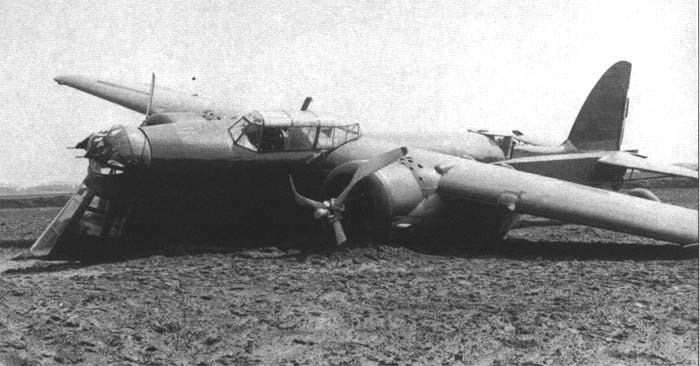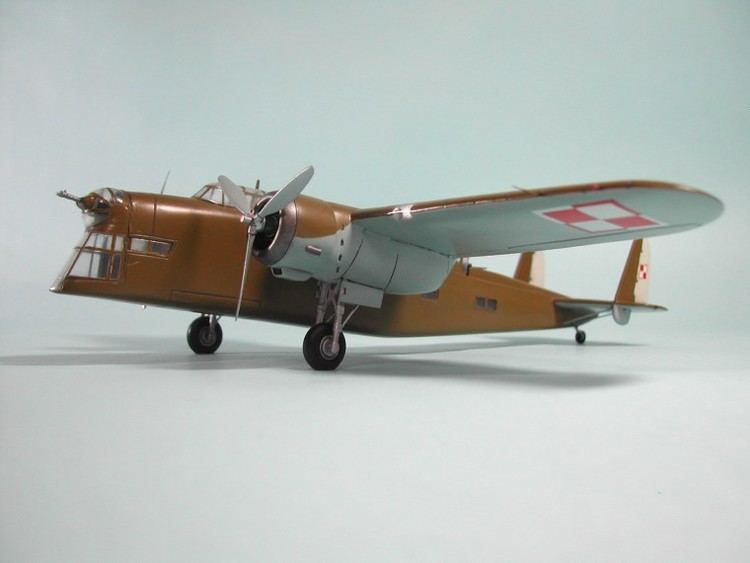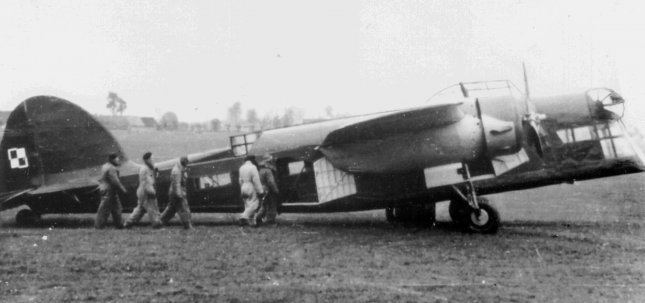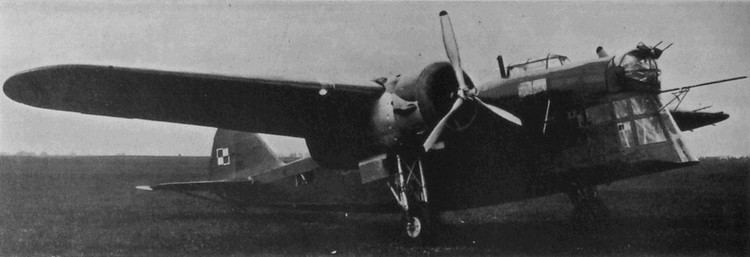Top speed 341 km/h Length 15 m First flight March 1936 | Wingspan 18 m Introduced 1938 | |
 | ||
The LWS-6 Żubr (PZL.30 Żubr, wisent) was a Polish twin-engined medium bomber, produced by the LWS factory before World War II. A short series was used for training only, because it was inferior to the PZL.37 Łoś design.
Contents

Design and development

It was designed by PZL in the early 1930s, initially as a passenger aircraft (the main designer was Zbysław Ciołkosz). Since the Polish Airlines LOT bought Douglas DC-2 planes instead, the project was converted to a bomber aircraft, with a projected bomb load of 1,200 kg. It was developed as an alternative less-advanced design, in case the modern bomber design, PZL.37 Łoś would fail. The first prototype, designated PZL.30 (or PZL.30BI) was flown in March 1936 by Bolesław Orliński (only three months before the PZL.37 prototype).

The prototype, initially powered with two 420 hp Pratt & Whitney Wasp Junior engines, was next refitted with much stronger 700 hp Bristol Pegasus VIII (it was known then as PZL.30BII). The plane was accepted for a limited production by the LWS state factory in Lublin, of which Ciołkosz became the main designer. It was planned to produce 16 aircraft for the Polish Air Force, under a designation LWS-6 Żubr. The serial aircraft incorporated further changes, among others a landing gear folding into a fuselage sides was changed to more conventional one folding into engine nacelles. After a prototype crash on November 7, 1936, caused by a weak construction of a wing, the design had to be strengthened. Due to this increased weight it had a smaller bomb load than expected. An improved prototype was made with a double tail fin, and flown at the end of 1937. The serial variant, however, returned to a single tail fin configuration, but it was enlarged in a course of production. A series of 15 aircraft were built in 1938. The factory continued work on Żubr development, and in 1939 developed a lighter wing of steel construction and a refined fuselage, but these were not built due to the outbreak of World War II.

In 1937 the factory proposed to build a floatplane torpedo bomber variant LWS-5, instead of developing LWS-1 (R-XXA) design of Jerzy Rudlicki. At first the Polish Navy revealed interest and works upon the LWS-1 were cancelled despite their progress, but then due to problems with LWS-6 development and its low bomb load, it was rejected by the Navy. Work upon the prototype was canceled in 1938. It was supposed to be fitted with two Short floats of the Lublin R-XX prototype.

In many publications, especially older ones, the erroneous designation LWS-4 is used for the Żubr, but in fact it does not come from any documents and it was a designation of a light fighter project (PZL.39). The Żubr was given a military code number 71 and the series was to have factory numbers 71.1 to 71.17, but the aircraft were given different last numbers eventually due to secrecy.
Operational history

Fifteen LWS-6 aeroplanes were delivered to the Polish Air Force in 1938-1939. From the beginning they were considered obsolete, and were assigned to training units. In use they revealed several faults - for example, the undercarriage retracted on some planes during landing. However, there was only one crash in a military aviation, without fatal injuries. Reportedly, they flew with the undercarriage fixed in the open position later. As training aircraft they had their armament removed. The Żubr was inferior to its counterpart the PZL.37 Łoś, developed at the same time. For a similar price, it was of now obsolete design, slower, with inferior performance, and a much smaller bomb load.
During the Invasion of Poland in 1939, Żubrs were not used in combat. Several were destroyed on the ground, along with many other training aircraft. The Germans captured several LWS-6, including the twin-tailfin prototype, and used them for blind flying training until at least 1942 (among others, in Blindflugschule Schleissheim). Ironically, the Luftwaffe service of this bomber was longer than the Polish one.
The Soviets captured four aircraft after their invasion on Poland and next used them in communication aviation.
Apart from the Polish Air Force, Romania showed an interest in the Żubr prototype in 1936, and wanted to buy 24 planes. However, after the prototype crash on November 7, 1936 over Michałowice with two Romanian officers on board, they ordered the PZL.37 Łoś instead (the factory published a cover-up story, that the crash was caused by one of Romanians opening the door during flight).
Operators
Technical design
The aircraft was conventional in layout, high-wing cantilever monoplane, of mixed construction (metal and wood). The fuselage was rectangular in cross-section, made of a metal frame, covered with metal (upper fuselage) and canvas (sides and bottom), front part was made of duralumin. Wings were of wooden construction, plywood covered. There was a crew of four: pilot, commander-bombardier, radio operator and a rear gunner. The bombardier was accommodated in a glazed nose, with a forward machine gun turret and a significant pointed "beard" below. The pilot's canopy was above a fuselage, offset to the left. The rear gunner operated an upper turret, elevating to a working position. The main undercarriage retracted into engine nacelles. The plane was powered by two Bristol Pegasus VIII radial engines, normal power: 670 hp (500 kW), take-off power: 700 hp (522 kW). Bombs were carried in a bomb bay in the fuselage, the maximum load was 660 kg.
General characteristics
Performance
Armament
